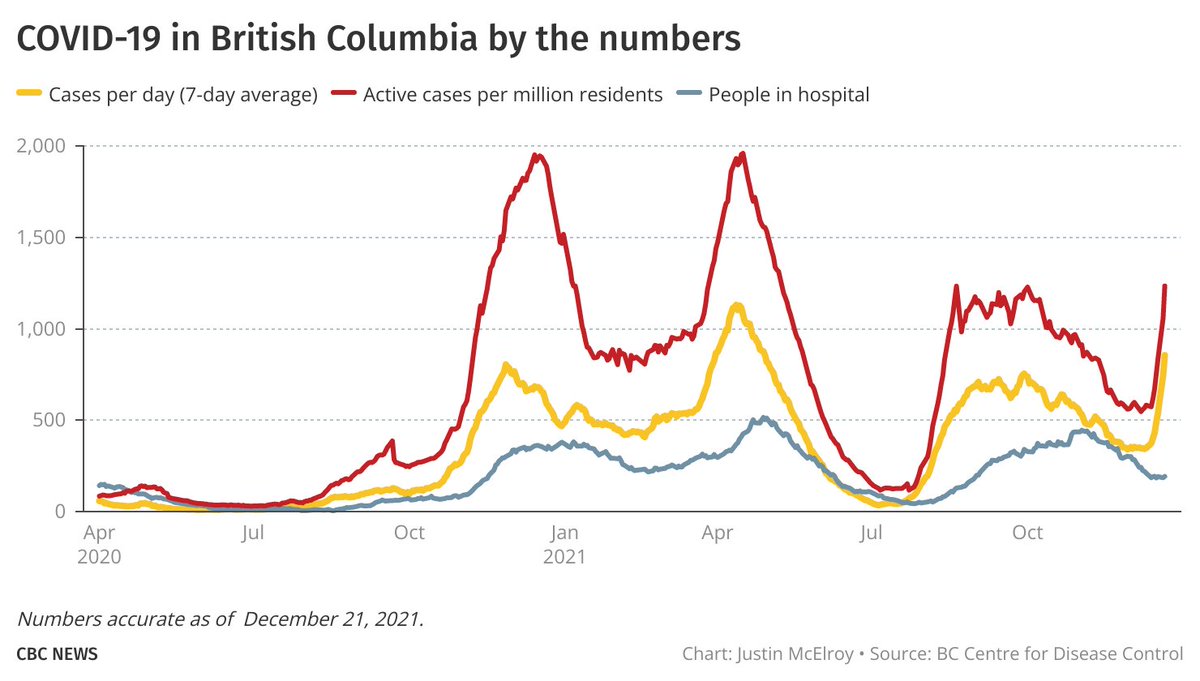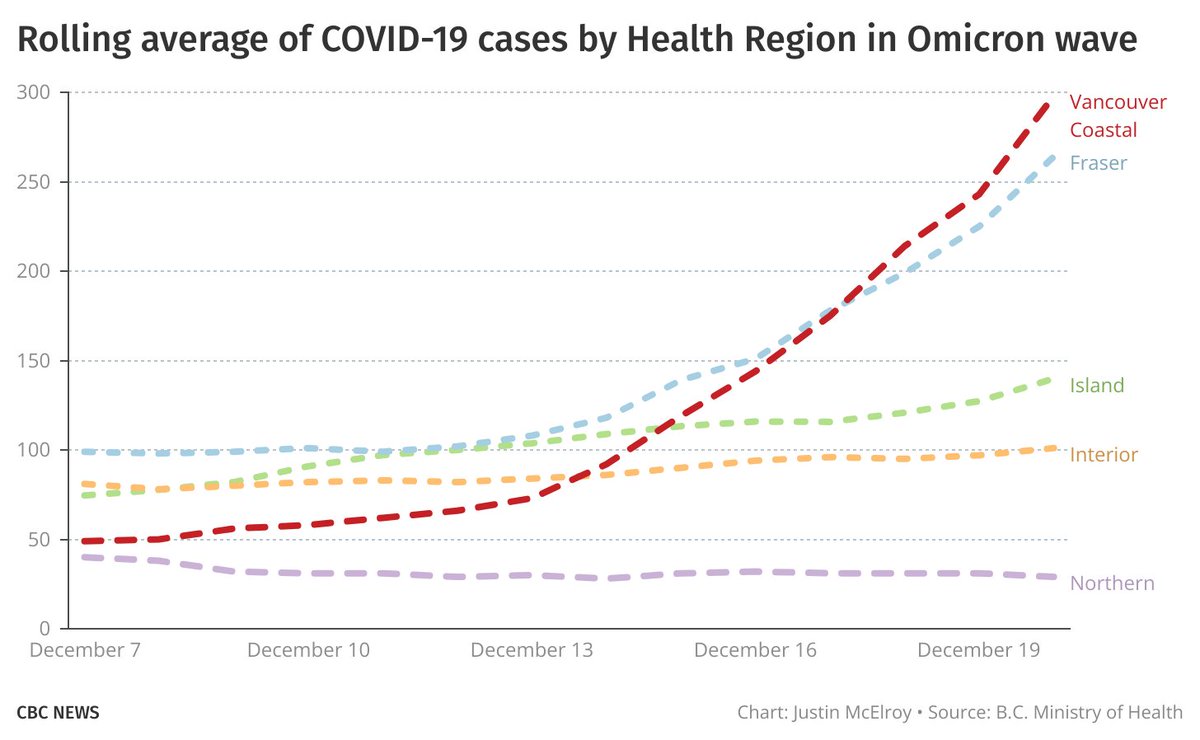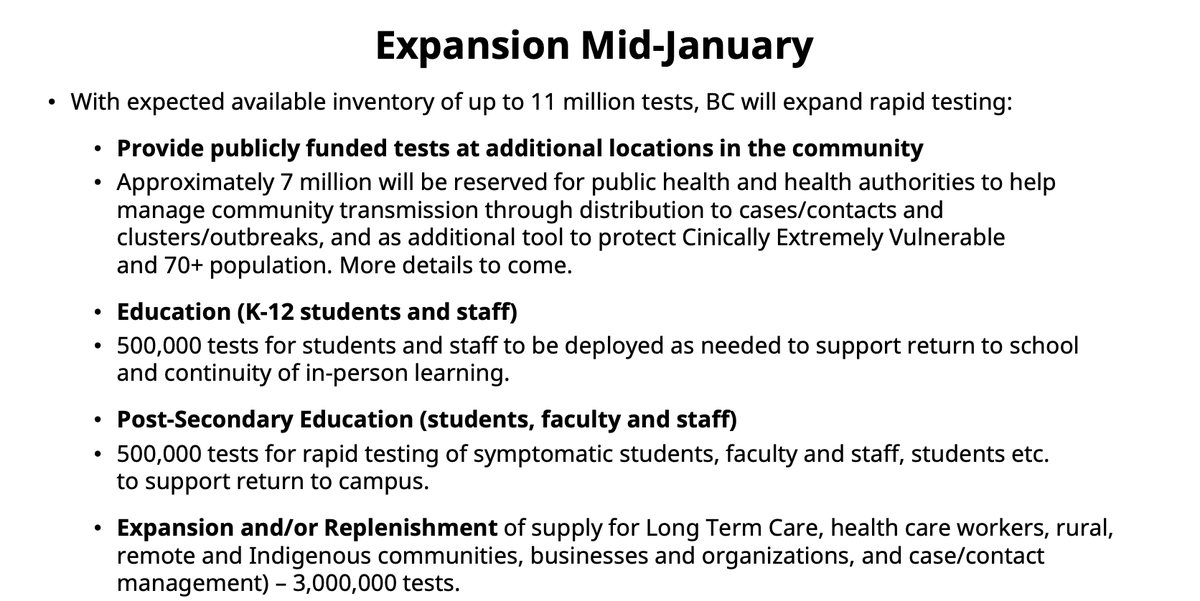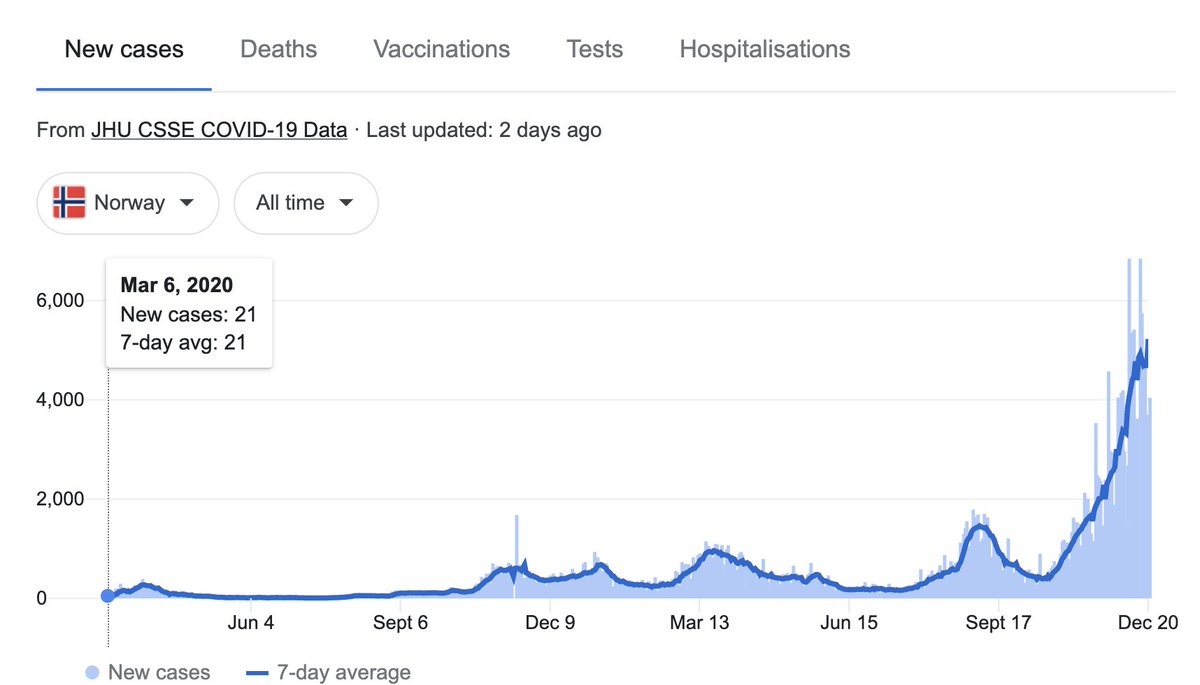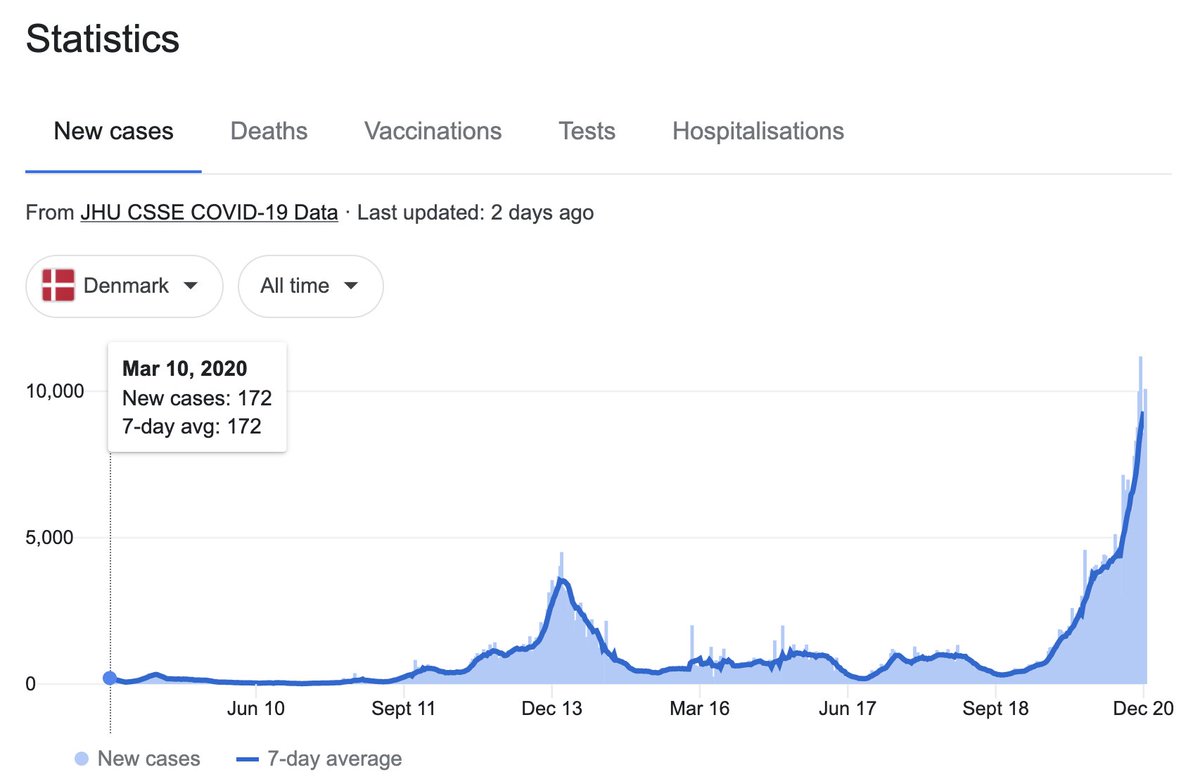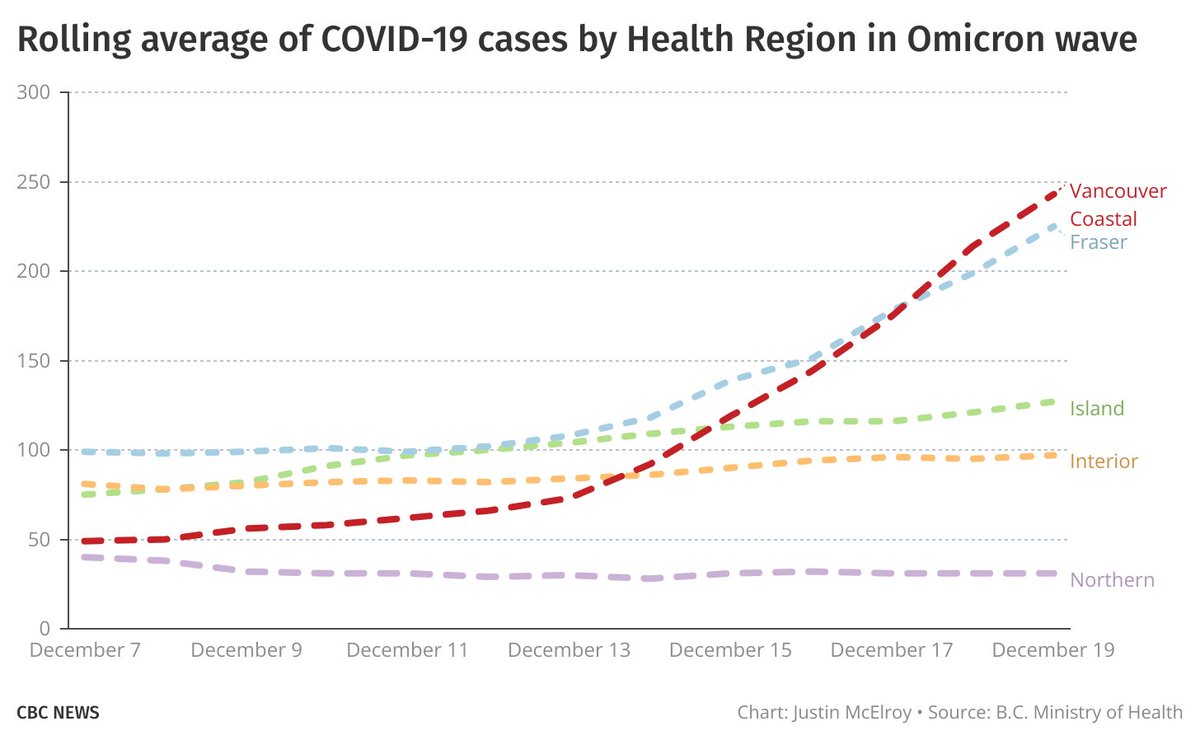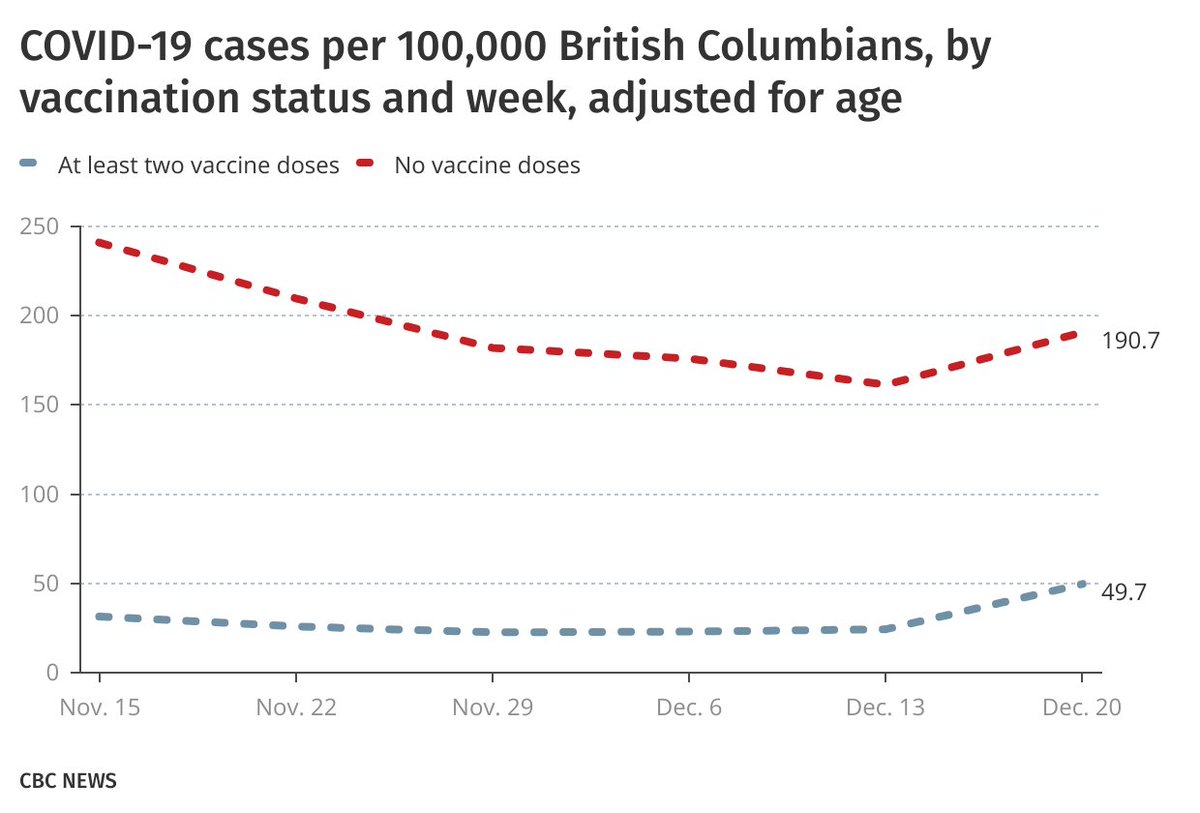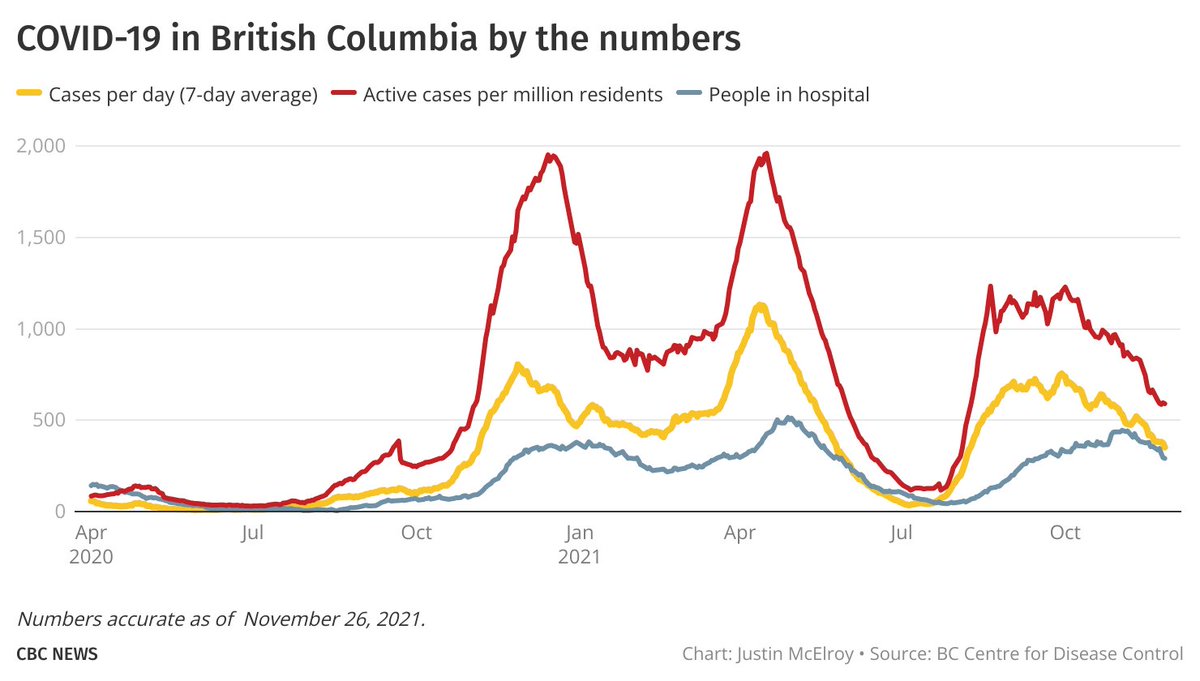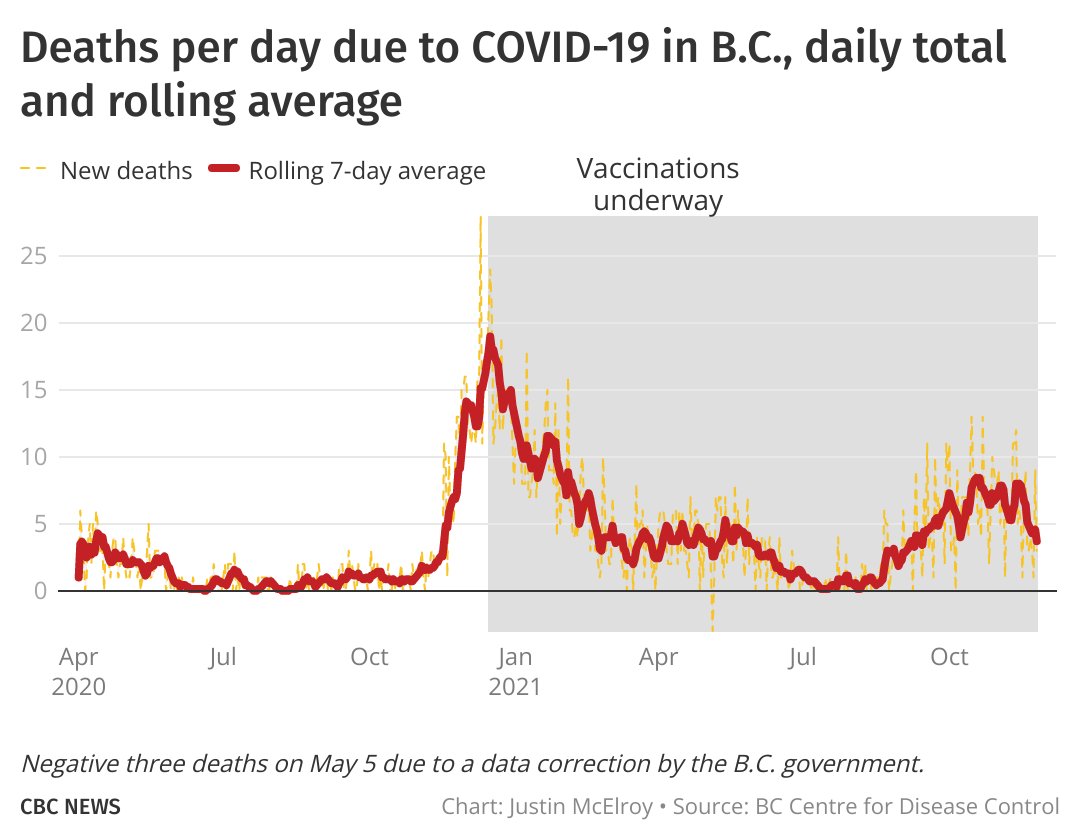
RECORD HIGH 1,474 cases of #COVID19 in B.C. today, a 152% increase from last Wednesday, as Omicron continues to do Omicron things.
Active cases up to 7,253, hospitalizations down to 187, and six new deaths.
Today's chart.
Active cases up to 7,253, hospitalizations down to 187, and six new deaths.
Today's chart.
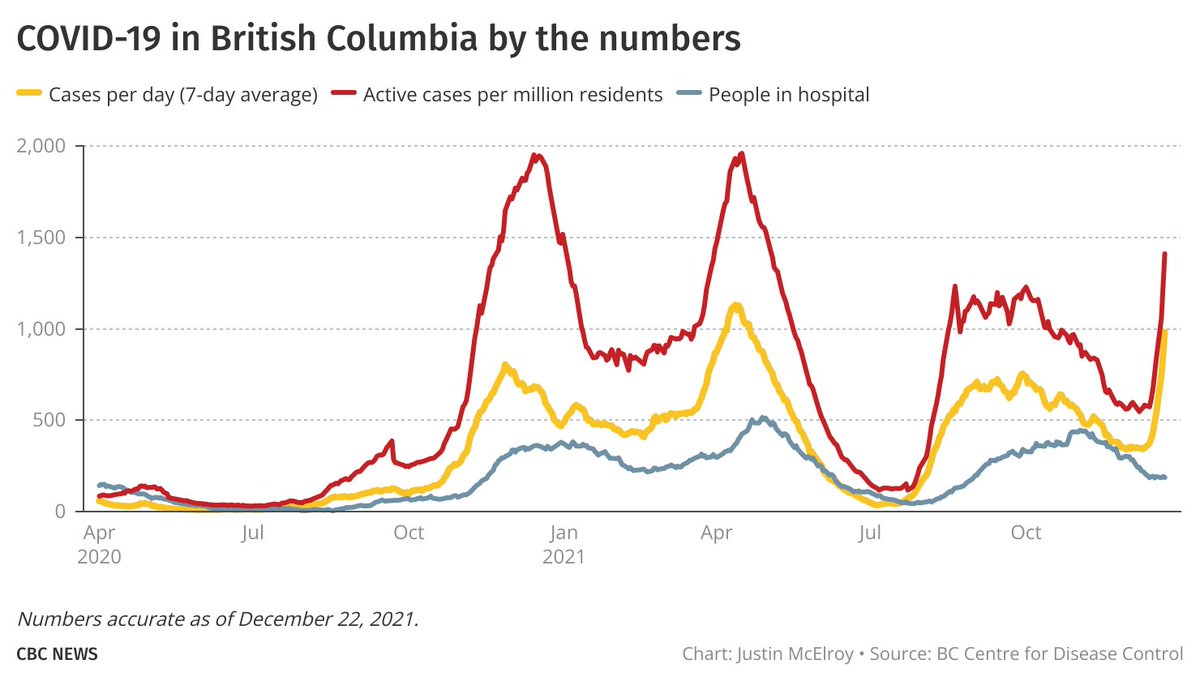
Just 19,949 third doses given in B.C. yesterday (down from last Monday), compared to 208,649 in Ontario, 79,648 in Quebec and 38,295 in Alberta.
The different strategies playing out in clear ways this week.

The different strategies playing out in clear ways this week.
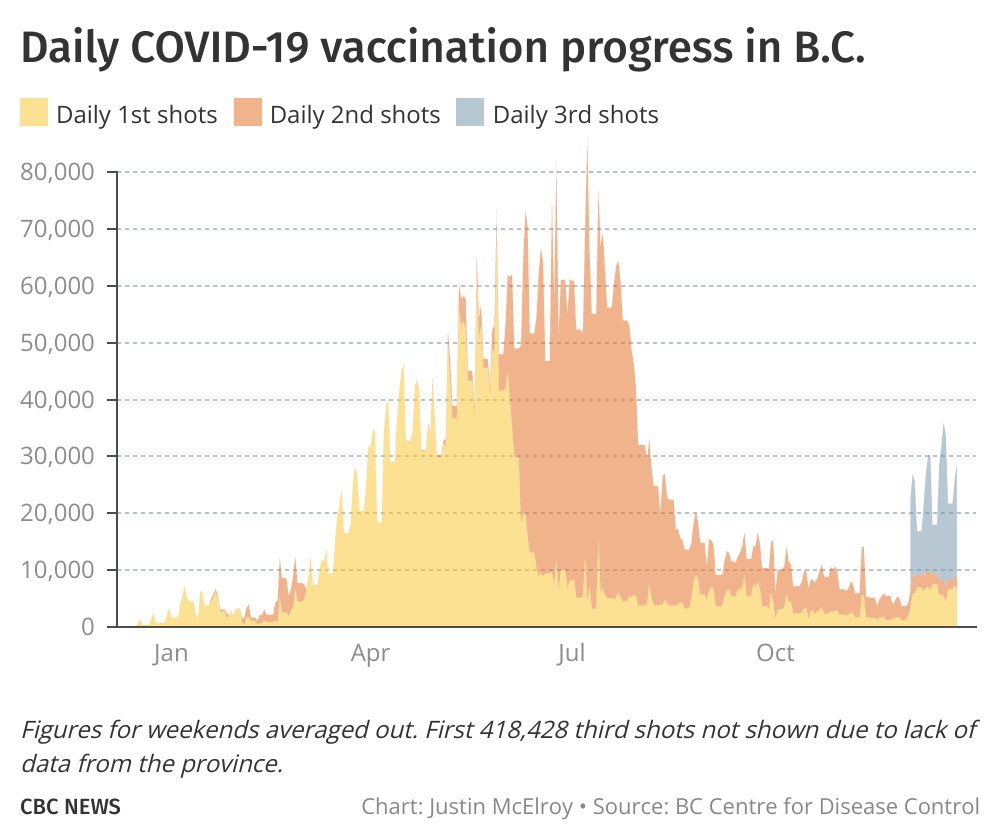
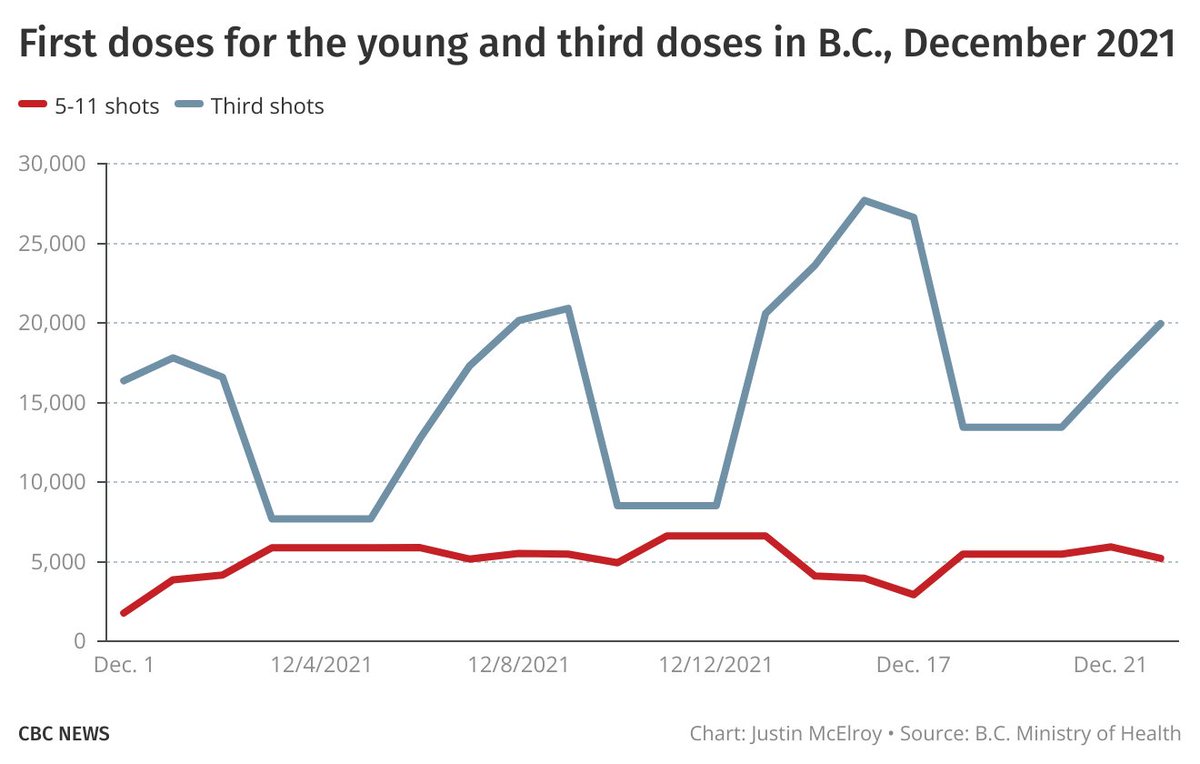
72% of all cases in the last week in B.C. have been in people with at least two doses.
But when adjusted for population, that still means unvaccinated people have been getting infected at more than double the rate.
And the ratio for hospitalizations is still holding steady.
But when adjusted for population, that still means unvaccinated people have been getting infected at more than double the rate.
And the ratio for hospitalizations is still holding steady.
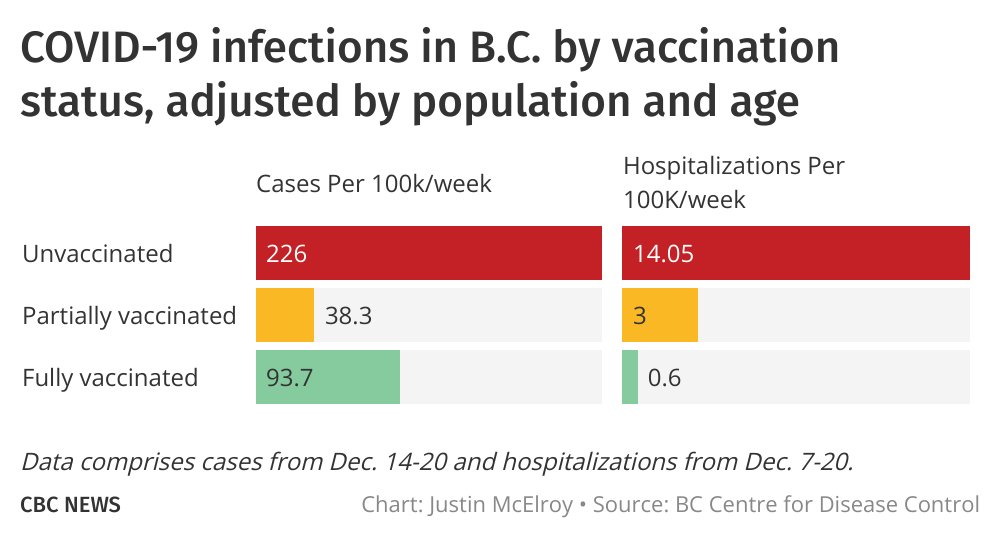
(How that ratio of hospitalizations changes in the next couple weeks is a critical question for people's risk assessment, and I'll do my best to include that daily for the next bit, along with maybe throwing in a new line graph as well to show changes over time)
As always, hospitalizations and deaths are key assessments, but also lagging indicators.
No movement yet, and let's hope it remains that way.
(Wednesdays have had high number of deaths for several weeks in a row, I think is due to a reporting quirk, so that average is flat)

No movement yet, and let's hope it remains that way.
(Wednesdays have had high number of deaths for several weeks in a row, I think is due to a reporting quirk, so that average is flat)
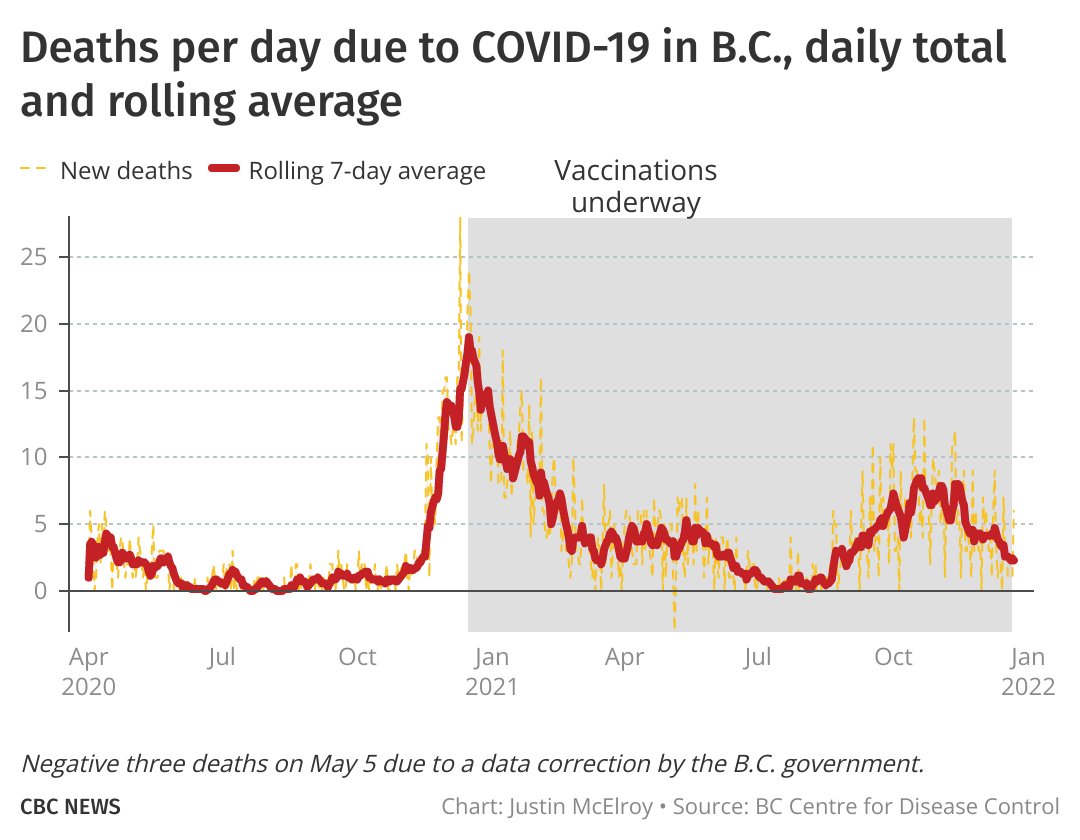
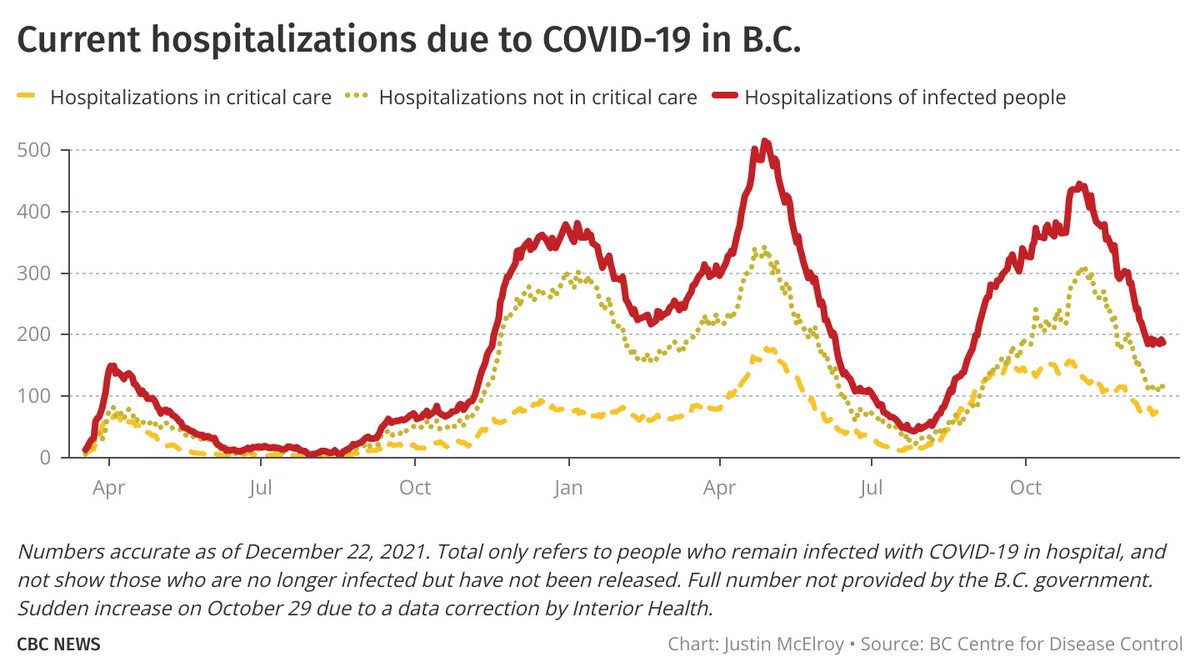
Couple key data questions that will be helpful for our understanding in this wave:
- What is the difference in cases/hospitalizations by 2nd and 3rd shot?
- If people are sent away from testing sites with a rapid test and are positive, is that added to the list if they report?
- What is the difference in cases/hospitalizations by 2nd and 3rd shot?
- If people are sent away from testing sites with a rapid test and are positive, is that added to the list if they report?
I'm asking the government about both of these questions, and I'll let you know if they reply.
And of course data from other countries further along the wave will come in first, which will help.
But for now, we work with the data we have.
And of course data from other countries further along the wave will come in first, which will help.
But for now, we work with the data we have.
Two notes:
1) the BCCDC dashboard has updated and says there were 1,528 cases today, not 1,474, so that's the number I'll be using, as the province said in their release there might be an update.
2) whoo boy that coastal health number
1) the BCCDC dashboard has updated and says there were 1,528 cases today, not 1,474, so that's the number I'll be using, as the province said in their release there might be an update.
2) whoo boy that coastal health number
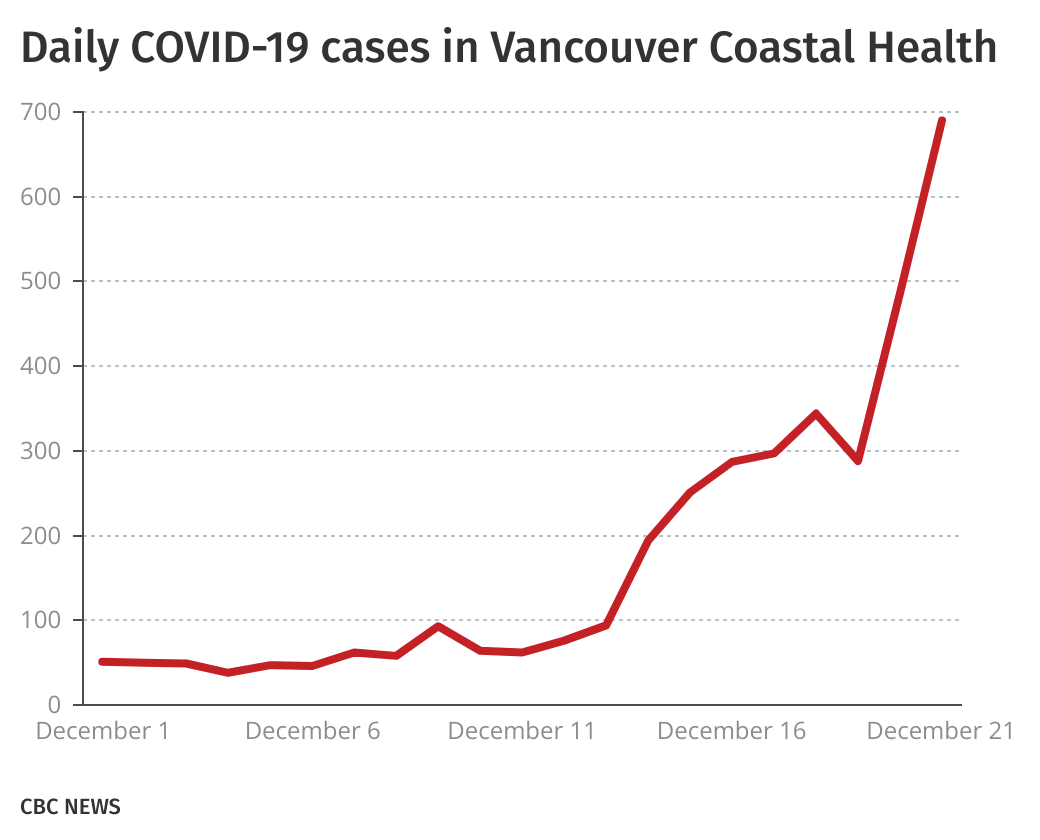
B.C. conducted 16,259 tests yesterday according to the BCCDC, only the 12th highest amount in the pandemic despite a record number of cases.
Given what we've heard in Vancouver and Victoria about testing, safe to say we will have lagging effects in case counts as well.
Given what we've heard in Vancouver and Victoria about testing, safe to say we will have lagging effects in case counts as well.
• • •
Missing some Tweet in this thread? You can try to
force a refresh


